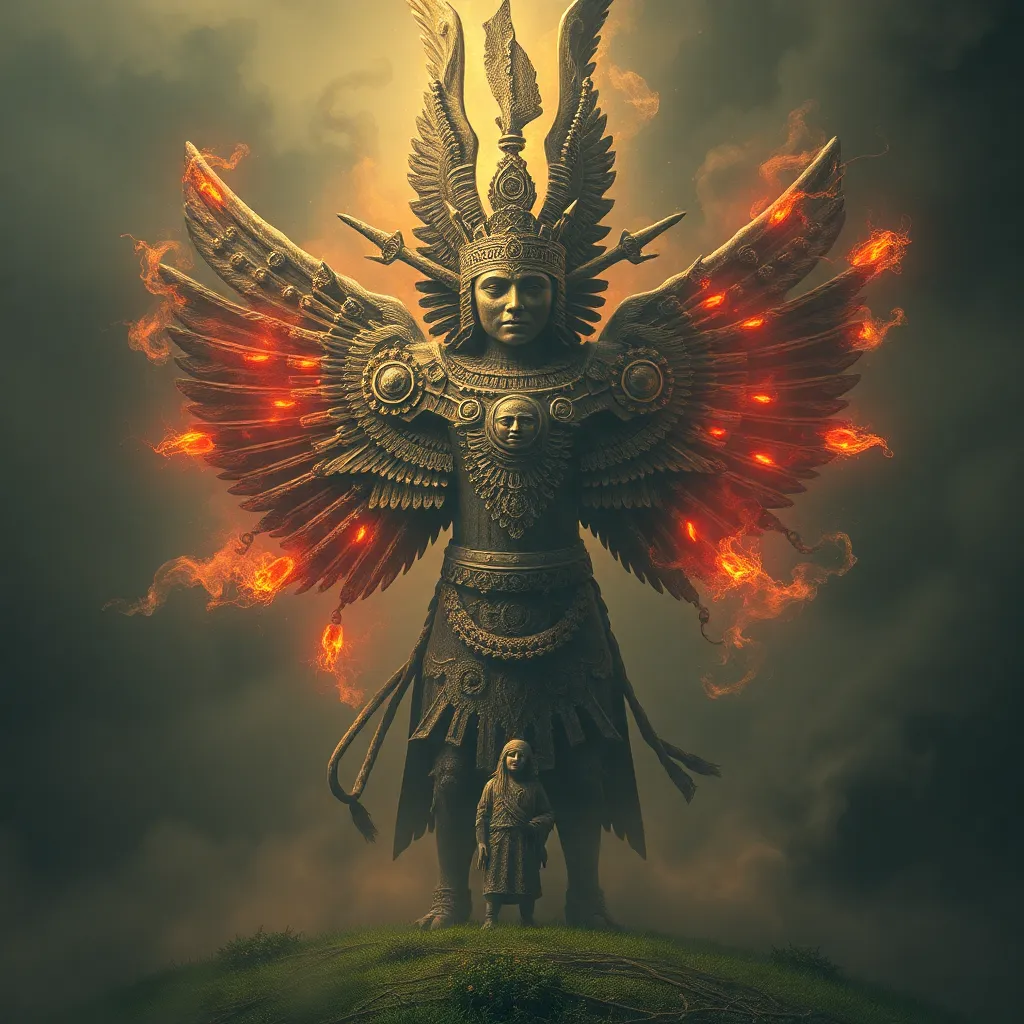The Ifrit in Sufism: Exploring Their Role in Mystical Teachings
I. Introduction
The Ifrit is a fascinating entity in Islamic mythology, often depicted as a powerful and fiery supernatural being. In the context of Islamic tradition, Ifrits are typically associated with the jinn, known for their strength and ability to influence the human realm. This article delves into the concept of Ifrit within Sufism, a mystical branch of Islam that emphasizes the inner dimensions of faith and the spiritual journey of the individual.
Sufism is characterized by its quest for divine love and knowledge, seeking a direct and personal experience of God. Through various practices and teachings, Sufis aim to transcend the mundane and attain a higher state of consciousness. The purpose of this article is to explore the role of Ifrit in Sufi teachings, examining its historical significance, symbolic meanings, and contemporary relevance.
II. Historical Context of Ifrit in Islamic Tradition
The origins of the Ifrit can be traced back to pre-Islamic folklore, where they were often depicted as formidable creatures associated with fire and chaos. In Islamic texts, such as the Quran and Hadith, Ifrits appear as individuals capable of great power, sometimes serving as adversaries to the prophets.
As Islamic teachings evolved, the Ifrit transitioned from a folkloric figure to a symbol of deeper spiritual truths. The Ifrit became a representation of the inner struggles faced by individuals on their spiritual path. This transformation illustrates how Islamic tradition often reinterprets supernatural beings to convey moral and metaphysical lessons.
In comparison to other supernatural beings in Islamic tradition, such as angels and lesser jinn, Ifrits are unique in their fiery nature and the moral complexities they embody. While angels are viewed as pure and obedient, Ifrits capture the essence of rebellion and the struggle against one’s baser instincts.
III. The Concept of Ifrit in Sufi Literature
In Sufi literature, the Ifrit is often referenced as a significant symbol. Key texts, such as the works of Rumi and Ibn Arabi, delve into the mystical implications of encountering the Ifrit within the self. These writings explore the tension between the divine spirit and the ego, with the Ifrit symbolizing the darker aspects of human nature.
The symbolic meaning of Ifrit in Sufi poetry often extends beyond mere representation of evil. Instead, it conveys the idea of transformation and purification. For instance, Rumi frequently uses fire as a metaphor for the trials that lead to spiritual enlightenment, with the Ifrit embodying the challenges one must confront.
Notable Sufi figures, including al-Ghazali and Attar, have also interpreted the Ifrit in ways that emphasize the necessity of facing one’s internal demons. Through their works, they highlight the importance of confronting these challenges in order to achieve a higher state of awareness and closeness to the divine.
IV. Ifrit as a Metaphor for Inner Struggle
In Sufi thought, the Ifrit is often viewed as a representation of the ego or lower self, known as Nafs. This concept of Nafs encompasses the desires and impulses that can lead individuals astray from their spiritual path. The Ifrit, therefore, symbolizes the internal battle that each person must wage to overcome these distractions.
Sufi teachings emphasize the need to tame the Ifrit within oneself. This process involves self-discipline, introspection, and a commitment to spiritual practices that foster self-awareness. By recognizing the Ifrit as a part of their inner landscape, Sufis can begin to navigate the complexities of their own nature.
The journey to self-realization involves a conscious effort to confront and transform the Ifrit. This struggle is not merely about suppression but rather about understanding and integrating these aspects into a holistic sense of self. Overcoming the Ifrit leads to greater spiritual insight and a profound connection with the divine.
V. Ifrit and Spiritual Transformation
The Ifrit plays a pivotal role in the Sufi journey of spiritual ascension. It represents the initial challenges and obstacles that must be faced on the path to enlightenment. By engaging with the Ifrit, practitioners can experience transformative practices that facilitate growth and understanding.
Transformative practices in Sufism related to the Ifrit include:
- Meditation and contemplation to gain insight into one’s desires.
- Whirling and dance to express and transcend the ego.
- Chanting and prayer to invoke divine assistance in overcoming the Ifrit.
Case studies of personal transformation through Ifrit symbolism illustrate the profound impact of these teachings. Many individuals recount experiences of facing their fears, desires, and weaknesses, ultimately emerging with a renewed sense of purpose and connection to their spirituality.
VI. The Ifrit in Sufi Rituals and Practices
The integration of Ifrit concepts in Sufi rites and ceremonies is pronounced. Rituals often involve invoking the name of the Ifrit as a means of confronting and transforming the lower self. Sufi gatherings provide a communal space for individuals to share their struggles and victories in relation to the Ifrit.
The significance of prayers and chants that invoke the Ifrit lies in their ability to create a collective awareness of the inner battles faced by each participant. These practices foster a sense of unity and support, allowing individuals to confront their Ifrits together.
VII. Contemporary Relevance of Ifrit in Sufism
The modern interpretation of Ifrit in contemporary Sufi circles has evolved, reflecting the challenges of today’s world. Many Sufis view the Ifrit as a metaphor for the distractions and materialism prevalent in society. This interpretation encourages individuals to seek a deeper understanding of their spiritual path amidst modern challenges.
In the context of globalization and intercultural dialogue, the Ifrit serves as a bridge between ancient teachings and contemporary issues. The symbolism of the Ifrit resonates with people across cultures, emphasizing the universal struggle against the ego.
Digital media has further impacted the understanding of Ifrit in Sufism. Online platforms allow for the sharing of teachings and experiences, fostering a global community of seekers who engage with the mystical dimensions of the Ifrit.
VIII. Conclusion
In summary, the role of Ifrit in Sufism is multifaceted and deeply significant. It represents the inner struggles faced by individuals on their spiritual journey, offering a metaphor for the challenges of self-awareness and transformation. Through the lens of Sufi teachings, the Ifrit embodies the duality of existence, prompting seekers to confront their lower selves to attain a higher state of consciousness.
The enduring legacy of Ifrit in spiritual teachings highlights its relevance in both historical and contemporary contexts. As Sufis continue to explore the mystical symbols within their practice, the Ifrit remains a powerful reminder of the inner work necessary for true spiritual transformation.
As a call to further exploration, the study of mystical symbols in Sufi practice, including the Ifrit, invites individuals to delve into their own inner landscapes, fostering a deeper connection to the divine and a more profound understanding of the self.



